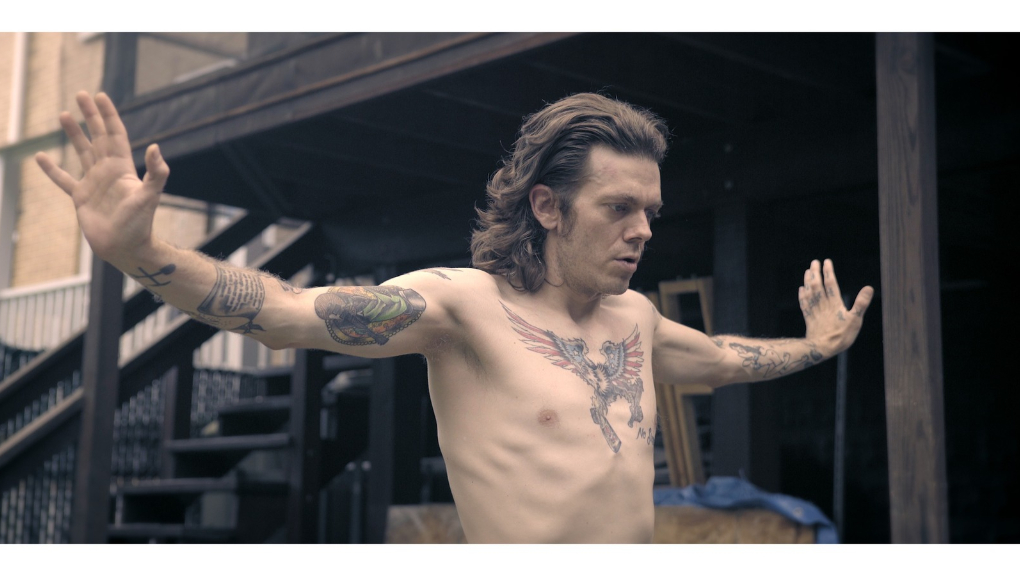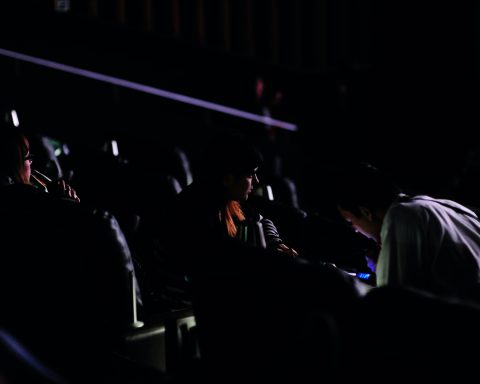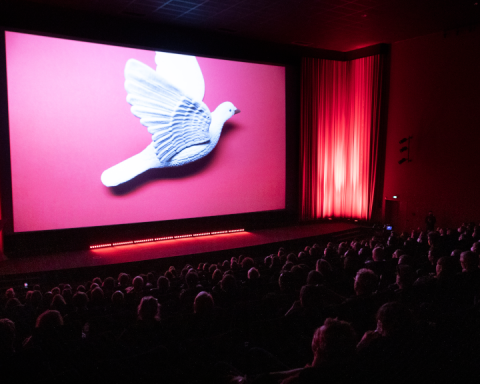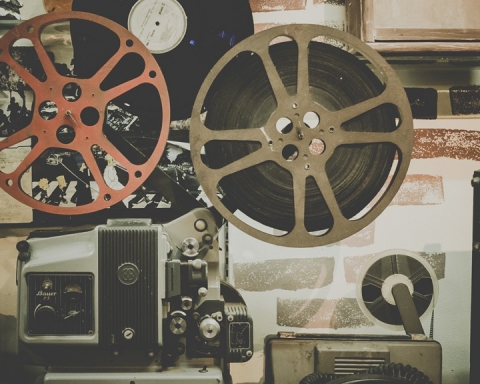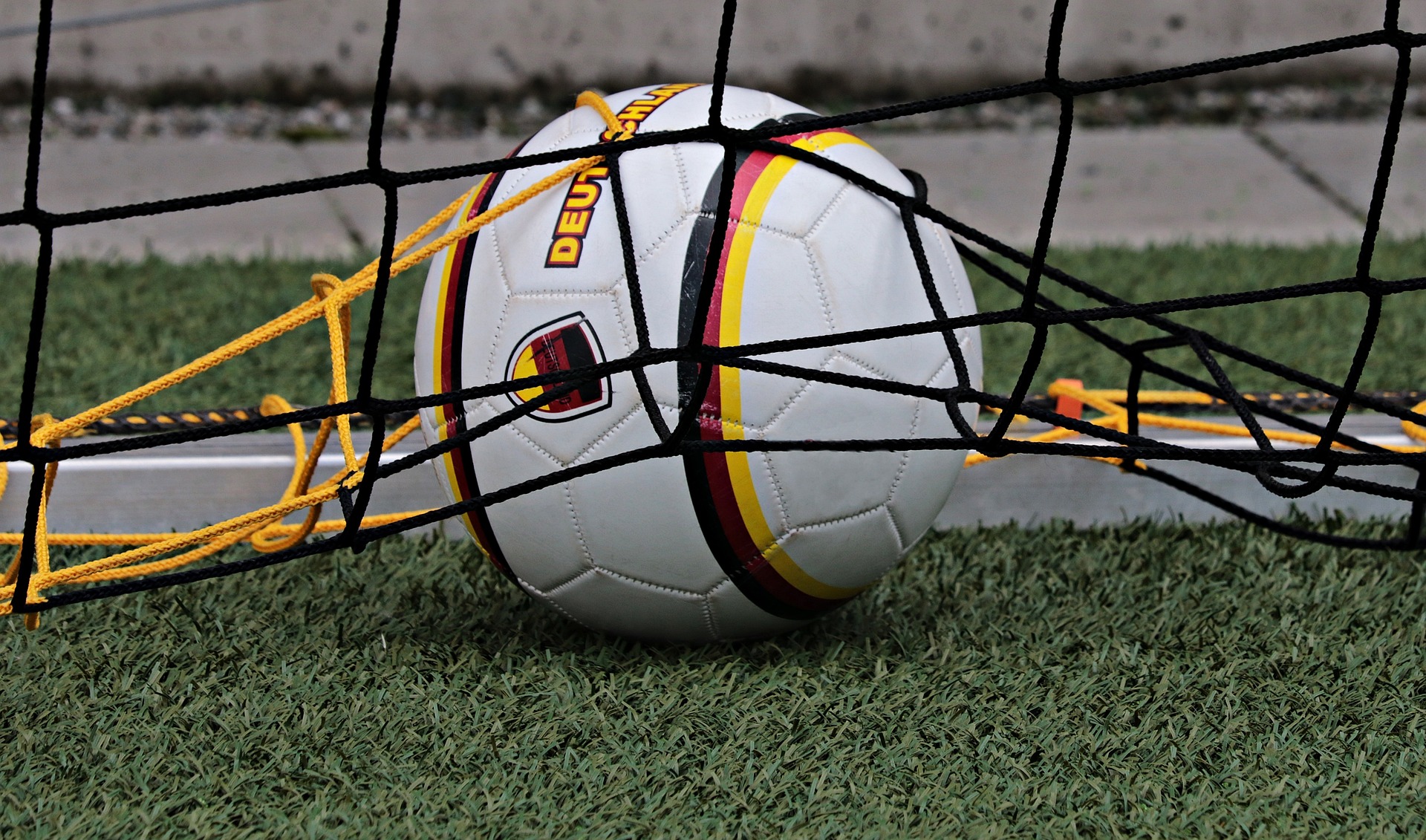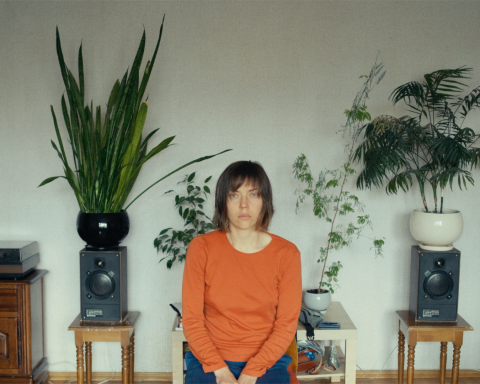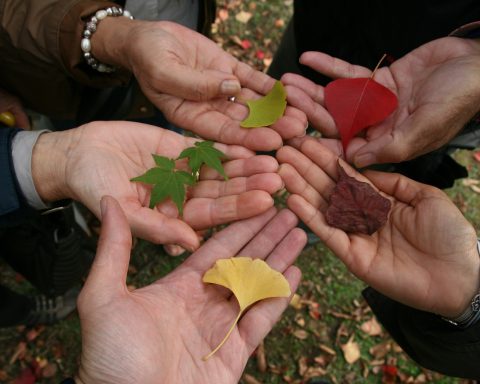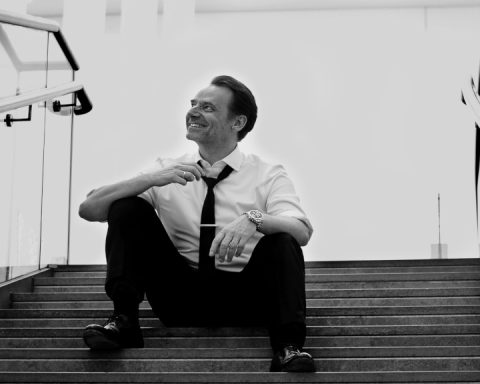It’s not often that we get to meet the characters from the movies that deeply touch us. But I had the chance this week during DOK Leipzig.
One of them was the quirky, kind, effusive director and protagonist from The Strange Sound of Happiness. His name is Diego Pascal Panarello, and he’s originally from a small town in Sicily. We chatted in person and via e-mail in the midst of his running around and talking to his many friends at the fest.

Turns out Diego has a strange, indeed, fascination with playing a small metal instrument known as the “Jew’s harp.” In his diary-like documentary, he narrates his quest to find the life source of this instrument – while finding purpose in his own life post-breakup and without a job and crashing at his parents’ place. The quest takes him all the way to Yakutia, Siberia, turning the film into a travelogue.

At DOK Leipzig, we got to see the results of his adventure live, besides on-screen: He brought his Yacutian friends to perform at the premiere with him. They’ve apparently accepted him as one of their own, and respect him highly as a Jew’s harp player.
Another one of the characters I got to greet at DOK fest was Veronika Raila, the protagonist and co-writer of Sandgirl (directed by Mark Michel). Her parents were also at the screening, and I got to shake their hand and congratulate them. It’s a poetic and visually enchanting story, told through the voice of a narrator who is not Veronika, but who speaks her words, and through Veronika’s mother.
It is also told through the sand art and animation of Anne Löper, who beautifully captured how Veronika felt: made of sand, trapped beneath sand, as she could not communicate with the outside world, talk or walk, due to a brain condition.
But the same brain causes Veronika to perceive the world in a different way and gives her a photographic memory and impressive analytical, philosophical and writing ability. Her mother literally takes her hand and acts both as a guardian angel and a medium for Veronika to share her talent, insights and poetry with the world. Veronika’s mother digs her out of the sand and allows Veronika’s self to assume shape. The film and Veronika’s presence in the fest were indeed very inspiring to me.

However, the personal highlight for me stemmed from a random encounter at the DOK opening party.
LeipGlo’s Maeshelle was wearing her now signature glittery eyebrows, and it caught Joe Boots’s eye. We’d just happened to go for the buffet when he spotted us. We went over to his table and ended up chatting with him for quite a while.
He was a friendly guy, and quite articulate and critical of the war. He was trying to turn his life around, having battled PTSD and alcoholism.
Joe Boots is a veteran of the US military. He’s the protagonist of a 30-minute documentary that bears his name. The director, Berlin-based Florian Baron, came over to the table as well with his funny-looking sweater.
Florian said he was wearing the sweater at the festival deliberately, as a conversation starter, rather than doing heavy e-mailing list promotion of the film. Maeshelle’s glittery eyebrows are a conversation starter, too. We all connected right then, and that’s why she and I decided to go watch their film during the fest.
In this case, the character came into our lives before the movie, and we didn’t know what to expect from Joe Boots.
We did gather a bit of info between Florian and Joe: that the film was set in Pittsburgh, Pennsylvania, where Florian had been living. That it followed Joe Boots after he was back home from war. That it’s part of a larger project following five veterans. And finally, that it’s shot in “high-speed slow motion.”
Florian explained that they filmed from a car in motion, producing the effect of characters moving backwards, and then slowed it down. That was meant to create a feeling of disconnection, while showing metaphors from daily life in Pittsburgh to illustrate the horrors of war in the Middle East. Hmmmm. I wondered how that would unfold on screen, whether they succeeded at handling and conveying all that.
So Maeshelle and I watched their movie Saturday at Schaubühne Lindenfels, before heading to the closing party at Westbad; we skipped the closing ceremony for it, and I’m glad we did, because Joe Boots turned out to be worth it.
After the film, I got to hang out with the crew, including cinematographer Johannes Waltermann, and some of their friends, at a nearby restaurant – and although I ended up not staying long at the closing party because I was too tired from festival week, those conversations more than made up for it.

Joe’s insights proved quite sharp and eloquent – in the movie, they were set against the backdrop and characters of routine in Pittsburgh; at DOK fest, they were spoken to a very receptive audience post-film.
Before the movie, I never knew a leafblower, crashing sippy cup and car windshield wash could be such poetic, heartbreaking sights. But the way they were selected and shot, and what Joe’s voice is saying just as they appear on screen, make them so. Joe’s voice is the only one we hear in the film, but it’s enough.
He talks about being brainwashed as a kid with Gulf War-themed playing cards, into seeing the US military as cool and Middle Eastern people as the enemy. About how the working class in the US – including his father and grandfather – is channeled into building as well as defending the country, and then continues to be poorly treated after returning from war.
Joe says 22 veterans commit suicide in the US per day. And that when he began to think about doing just that, it was time to shed the medicines shoved into his hand for the PTSD and try to change his life by other means.
Joe now helps build earthships in New Mexico, and I might want to visit him there one day.
[spacer height=”20px”]
DOK Leipzig is now wrapping up, but you can catch Joe Boots Monday, 6 November, on 3sat. The feature-length documentary, featuring five veterans as characters, is expected to come out in early 2018.
Cover shot: Joe Boots exercising. (Photo copyright DOK Leipzig 2017 / Florian Baron)

